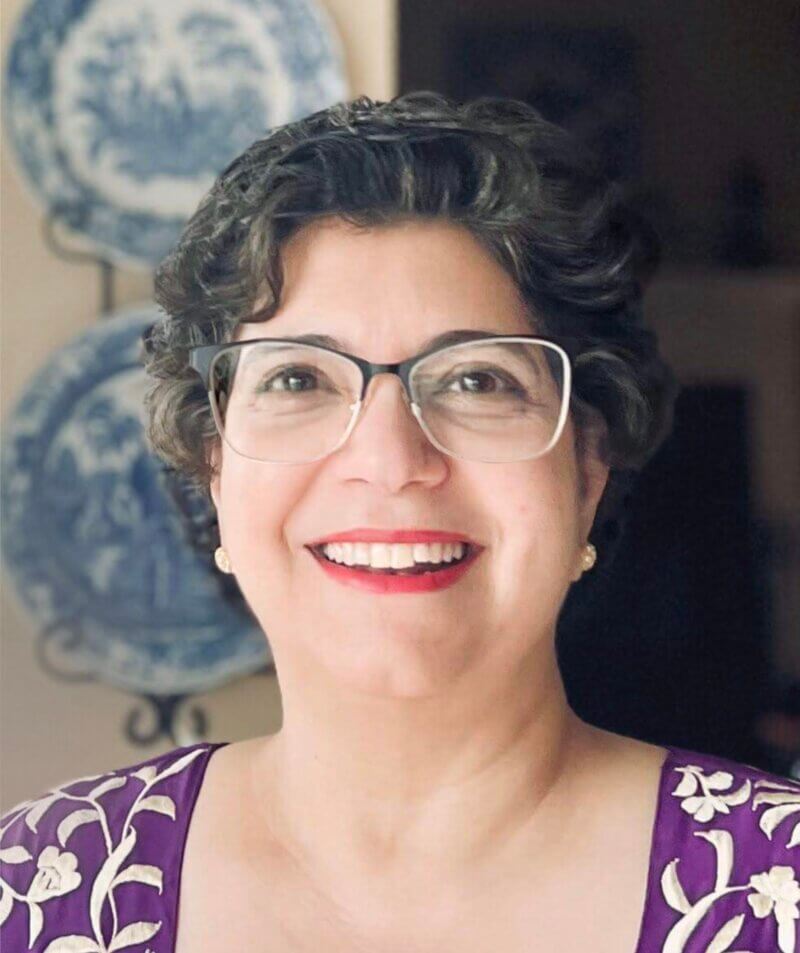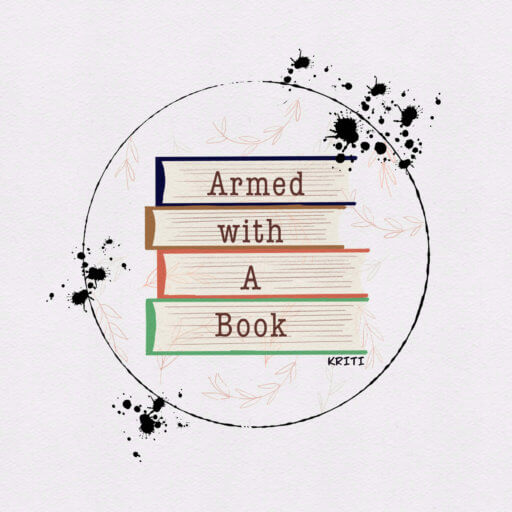Welcome, friend! Today I am chatting with author Nev March, about her latest book, The Silversmith’s Puzzle. This is the fourth book in the Captain Jim and Lady Diana Mysteries and I am so thrilled to have discovered this series featuring Indian characters and set in the 1800s. Enjoy the interview and let me know in the comments if you will be reading the book or picking up the series! I will return with the review of book 1, Murder in Old Bombay, which was a finalist for Edgar and Anthony Awards as well as Macavity, Barry and Hammett Awards for Crime Fiction.
The Silversmith’s Puzzle

Captain Jim Agnihotri and Lady Diana Framji return to India as they investigate a murder amidst colonial Bombay’s complex hierarchy in March’s fourth mystery.
In 1894 colonial India, Lady Diana’s family has lost their fortune in a global financial slump, but even worse, her brother Adi is accused of murder. Desperate to save him from the gallows, Captain Jim and Lady Diana rush back to Bombay. However, the traditional Parsi community finds Jim and Diana’s marriage taboo and shuns them.
The dying words of Adi’s business partner, a silversmith, are perplexing. As Captain Jim peels back the curtains on this man’s life he finds a trail of unpaid bills, broken promises, lies and secrets. Why was the silversmith so frantic for gold, and where is it? What awful truth does it represent?
Set in lush, late-Victorian India, Captain Jim and Diana struggle with the complexities of caste, tradition, and loyalty. Their success and their own lives may depend on Diana, who sacrificed her inheritance for love. Someone within their circle has the key to this puzzle. Can she find a way to reconnect with the tight community that threw them aside?
Get to know the author: Nev March

Hi Nev! It is a pleasure to have you on Armed with A Book. Please tell me and my readers a bit about yourself.
I’ve had a love affair with reading my whole life—romances, biographies, war stories, adventure book, westerns, you name it. As a teen, during the summers my sister and I exhausted two whole lending libraries! So writing came naturally to me. Before 2006, I wrote four entire novels (mostly long hand on legal size writing pads) and then traded chapters on a yahoo group. Then I stopped writing for a decade while my kids were little, and work got really busy (I worked 25 years in pharma commercial operations).
In 2015 when I got laid off, this was a chance to re-address what I want to do with my life. For me, that was to write and publish novels about immigrants and their relationships. Most of all I love writing about earnest, quirky, caring people facing unexpected challenges.
How did Captain Jim and Lady Diana meet? What inspired you to write a series about them?
Their meet-cute is the key subplot of Murder in Old Bombay. I loved this story so much it haunted me for months before I began writing. Then, I wrote daily for 4 straight months! It was addictive. Theirs is a story of a mismatched couple, almost a doomed romance, because Captain Jim is mixed-race (Anglo-Indian) and was an illegitimate child. Diana is a Parsi heiress, beloved by her large family, expected to marry well. She is expected to marry only another Parsi (an influential community of Persian refugees in India who follow the Zoroastrian religion). When Diana’s brother hires Captain Jim to investigate a family tragedy, Diana and Jim are thrown together and Captain Jim’s heart is at risk.
Captain Jim is a former soldier turned detective. How does his military background shape the way he approaches investigations?
As a former soldier and boxer (this was common in the 1800s), Captain Jim has the chops to deal with dangerous situations and violent antagonists. He can also take a few blows (and he does) but he’s very human, and so he hurts. These blows aren’t always physical—being mixed race means he’s perpetually the outsider. He’s an ardent fan of Sherlock Holmes, so Conan-Doyle’s tales and Holmes’ asides shape his investigative methods. While observation and deduction are key to his craft, he’s also methodical. His military training enables him to assess situations and make plans, but since he has little to no experience with high society, he must frequently improvise! Here’s where he learns to trust Diana’s judgement, since she’s grown up in fashionable society and been educated in an English finishing school.
Lady Diana is a partner in the truest sense. How has her role as an investigator grown in the series?
Oh, my how she’s grown! Diana starts out as a debutante looking for a role in life. In Peril at the Exposition she’s horribly alone, since Captain Jim has gone missing. She marshals her resources and hops on a train to follow him to dangerous Chicago, where the World Convention of Anarchists will meet—during the enormous 1893 World’s Fair, the Columbian Exposition. In my third book, The Spanish Diplomat’s Secret, Captain Jim is laid low with seasickness, so she dons the mantle of investigator, and helps solve the mystery onboard their steamship. However, in The Silversmith’s Puzzle, Captain Jim desperately needs to prove himself worthy (to his in-laws), so, for the most part, he works alone. Of course, when he recruits Diana’s help, things move much faster!
The Silversmith’s Puzzle is the fourth book in the series. What other adventures have the couple been on?
The couple meet in Murder in Old Bombay, which is still the most popular of my books. The sequel, Peril at the Exposition is mostly in Diana’s point of view, with a few chapters from Captain Jim. This was an unusual and challenging structure for me, but it adds a great deal of suspense. The third book The Spanish Diplomat’s Secret is set on a steamship, and Captain Jim is acutely seasick. Diana therefore steps up and is integral to solving the deadly mystery. In The Silversmith’s Puzzle, they return to old Bombay but the situation is vastly different from when they departed!
If readers were interested in learning more about late 1800s India, where would you suggest they start?
Anu Kumar’s The Kidnapping of Mark Twain is a fun place to start! Of course, the classics are MM Kaye’s The Far Pavilions, Kipling’s Kim, and George Orwell’s Burmese Days. There are many more as well, mostly by English writers, though Indian writers are quickly catching up!
For readers newly reading about the Parsi community, can you share about their history, traditions and beliefs that you highlight in this book?
Each of my stories has an “easter-egg” with some details about this small community in India. In The Silversmith’s Puzzle, I’ve described the Aachoo Meechoo ceremony, which is a warm and loving tradition still performed on birthdays, weddings and the like. My granny performed it when we arrived or left her home each summer! That’s probably a relic of a time when traveling was dangerous and often people died in train accidents etc. I also wove into my plot a saintly Zoroastrian priest, Dastur Kukadaru and ‘The miracle of the gold brick’ (which really happened, look it up!) as well as the Bombay dog riots (Parsis rioted in the 1830s, but I took the liberty of moving this event to the 1890s to suit my story). There’s a lot more as Captain Jim joins his wife’s family and tries to save her brother from the noose!
What do you hope readers will take away from The Silversmith’s Puzzle?
First, I want readers to just enjoy the rollicking ride. I also hope they are spirited back into the past where they can feel the warm sun and dappled shade, and experience the ups and downs alongside Captain Jim. There are some solemn truths buried in this tale, truths about the societal structures that still persist, such as the caste system and joint families living together, truths about belonging and feeling out of place. I hope some readers ponder these, and that it makes them kinder.
Do you have a favourite quote or scene in The Silversmith’s Puzzle that you find yourself going back to? What makes it stand out to you?
The scene with Captain Jim questioning the aged gardener Bala Mali is one that completely surprised me. As I wrote the Mali’s story, I found myself overcome with tears for his tragic life. There are thousands of such Balas in India, who ask for so little and have suffered so much. As it happens, that scene changed my plot, so that the gardener became integral to solving the puzzle of the Silversmith.
What’s your favorite part about writing a mystery novel?
I love it all! In the research phase, I devour articles, newspaper archives, history books, scholarly papers, and get to travel to places (both in-person, and in my mind). Then comes the addictive phase of drafting chapters, where the characters constantly surprise me and diverge from my outline. My least favourite part (the scariest phase) is revisions, which I liken to surgery! Finally, editing is pure joy, as I read my chapters aloud (hearing all their voices.) This is where I really pump up the language, prose, imagery, and find the rhythm and poetry in each bit.
How do you plot your mysteries? Do you start with the crime, the culprit, or the twist?
Each book differs! Usually it’s a character or event. I was reading about Ardeshir Godrej, founder of India’s vast conglomerate called Godrej Enterprises. Ardeshir (Adi) Godrej was a real person. As a 22-year-old law student, in 1891 his wife and a cousin died in mysterious circumstances. We still don’t know what really happened. My first book Murder in Old Bombay is based on that unsolved mystery.
I was fascinated by this man (upon whom I based my character Adi Framji). How did he recover from such a tragedy? He did not remarry, but became an inventor and serial entrepreneur. So, when I learned that his first business, (which failed,) was producing surgical equipment, I got the idea for my book – The Silversmith’s Puzzle. Real incidents inspire me, and then I pull one of them into my novel and bring it to life.
Is there anything else you would like to add?
I absolutely adore getting email from readers! I want to thank the readers who bought my books, read and enjoyed my stories. Thanks to those who’ve shared my books and recommended my novels to all their friends and family members. This is what my books are for: to be shared, discussed, dissected, and to inspire deep and rich conversations about life, the nature of people, and how far we have come.
Thank you so much for taking the time to chat with me and share with my readers.
Thanks for joining us! Connect with Nev on her website. Add this book on Goodreads. It is available wherever books are sold!
Many thanks to Minotaur Books for connecting me with the author and giving me a chance to highlight this book on my blog in exchange for an honest review. 🙂
Check out other mystery reads on my book review index page!

Be First to Comment